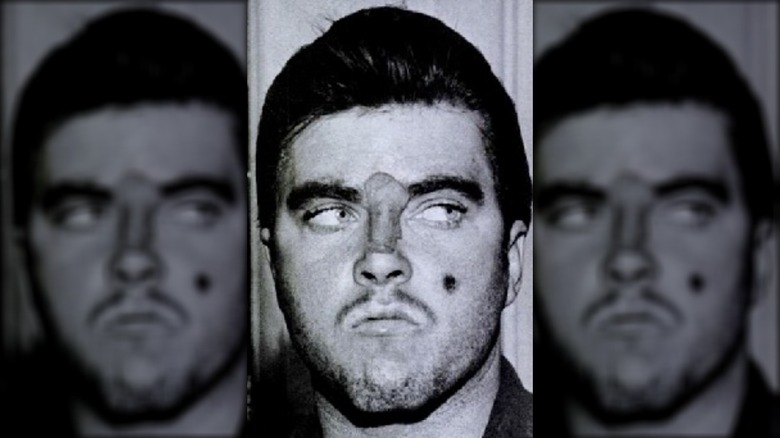The 'Pied Piper Of Tucson' Charles Schmid's Alleged Motive For Murdering Alleen Rowe
Charles Schmid's story has frightened and fascinated people for nearly 60 years. The Charles Manson-esque figure was a leader of Tucson's teenage social scene in the mid-1960s, despite being in his 20s. That's what eventually earned him the nickname "the Pied Piper." The nickname was probably taken from Life Magazine's extensive 1966 article on the case, which publicized it around the rest of the U.S.
That year, Schmid was found guilty of murdering three teenage girls in Tucson in 1964 and 1965. He was sentenced to death, though this was overturned a few years later by a Supreme Court case that negated many death sentences (via History).
Schmid actually told his friends he'd killed four people, but his first known victim was 15-year-old Alleen Rowe, per History. On the night of May 31, 1964, he and two friends, Mary French and John Saunders, coaxed Rowe out when she was home alone and convinced her to ride into the desert with them and drink. There, Schmid likely raped her before smashing her head with a rock. His friends helped him bury her, hide any evidence, and come up with an alibi (via Life Magazine). What inspired such loyalty, and such a violent crime?
Schmid's group of friends
One motive, according to Time Magazine, may have been that Rowe had previously stood Saunders up for a date. The crime was Schmid's idea, however, and Saunders may have participated in it simply because of Schmid's strong influence on him. Saunders was a troubled, bullied teen. Life Magazine described Schmid as a magnet for young, bored, lonely teenagers, many of whom were social outsiders. They were drawn in by his unusual personality, his seeming "maturity," his nice cars, his parties, and his endless stream of money from his parents.
French, whom Rowe had considered a friend, undoubtedly participated because she was "fantastically in love with [Schmid]," (via Life Magazine). French, who was not considered pretty or bright, was a prime target for Schmid's attention, and she stood by him even though he dated other girls. French and Saunders did, however, immediately confess to their roles in the murder after their arrests.
Rowe, for her part, found Schmid "creepy." He had an unusual appearance that he cultivated carefully. Wanting to look like Elvis Presley, he dyed his hair black and darkened his skin. He painted a mole on his face and stuffed his shoes with rags and cans so he'd seem taller than he was — despite the fact that he could barely walk this way (via Life Magazine).
A twisted desire
Schmid had another reason for murdering Rowe besides his friend's romantic embarrassment: he just felt like it. Supposedly, earlier on the night of May 31, he'd told his friends, "I want to kill a girl! I want to do it tonight. I think I can get away with it!" (via History). Per Life Magazine, he already had Rowe in mind as a victim and had discussed the plan with French "frequently."
Schmid had a history of violent behavior, according to Life Magazine. Rowe's mother already disliked him and considered him dangerous. She told the police about him when she reported Rowe missing, but without evidence, they couldn't hold him in custody. In fact, they believed Alleen Rowe was just one of many teenage runaways in Tucson at the time.
The following year, Schmid murdered his girlfriend, Gretchen Fritz, and her younger sister, Wendy. The girls' father believed Schmid was responsible for their disappearances, but the police again deemed them runaways. Schmid wasn't apprehended until three months later, when another friend who'd helped him hide the murders, Richard Bruns, confessed everything because he was afraid the girl he loved would be the next victim.
Per Life Magazine, quite a few of Schmid's teenaged acquaintances knew about the murders but never told anyone, either because they were afraid or didn't want to be seen as "finks." According to Life, that's what disturbed Tucsonians most about the dramatic case.


